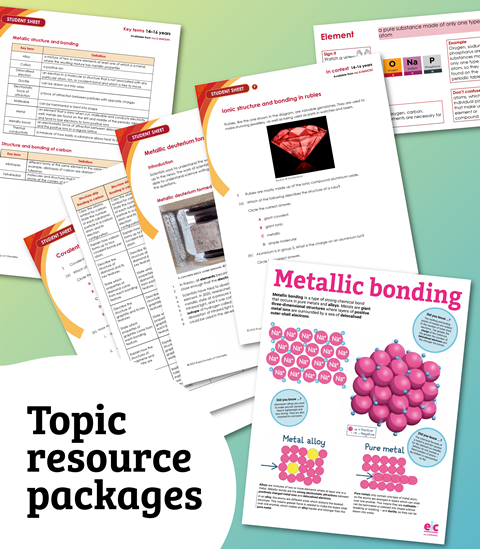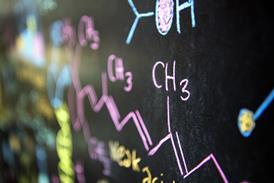All Structure and bonding articles – Page 2
-
 News
NewsBreakthrough method produces flexible diamond films
New method shows promise for mass producing ultrathin diamond films for use in the electronic industry
-
 News
NewsResearch reveals the asteroid that wiped out the dinosaurs
Isotopes help to identify the type of asteroid responsible for the catastrophic event that made dinosaurs extinct
-
 Resource
ResourceCovalent bonding | Developing understanding | 14–16 years
Develop learners’ understanding of the size and shape of covalent structures by interpreting a range of diagrams and models
-
 Resource
ResourceIonic bonding | Developing understanding | 14–16 years
Develop learners’ understanding of ionic lattices through comparing 2D and 3D representations
-
 Resource
ResourceMetallic bonding | Developing understanding | 14–16
Develop learners’ sub-microscopic understanding by interpreting a range of models used to represent metallic structure and metal ions
-
 Resource
ResourceCarbon allotropes | Developing understanding | 14–16
Encourage learners to think about how different structures of carbon are represented and what this means at the sub-microscopic level
-
 CPD article
CPD articleHow to teach structure and bonding of carbon at 14–16
Secure your learners’ understanding of this core topic with these teaching ideas
-
 CPD article
CPD articleTeaching structure and bonding in metals at 14–16
Help your learners to master the fundamentals of metallic bonding
-
 Article
ArticleWhat’s the world’s strongest glue?
Find out about the world’s stickiest glue and how adhesives bond things together
-
 News
NewsNew method grows larger diamonds
Use this real-world context when teaching about giant covalent structures
-
 CPD article
CPD articleHow to teach polymers at post-16
Teaching strategies and resources to help learners master polymers and overcome misconceptions
-
 Ideas
Ideas5 ways to successfully teach structure and bonding at 14–16
Strengthen students’ grasp of the abstract so they master this tricky topic and effectively tackle exam questions
-
 Resource
ResourceCovalent bonding | Structure strip | 14–16 years
Understand covalent bonding diagrams and their limitations, with this scaffolded writing activity
-
 Resource
ResourceIonic bonding | Structure strip | 14–16 years
Understand the models and diagrams used to represent ionic bonding and their limitations, with this scaffolded writing activity
-
 Resource
ResourceMetallic bonding | Structure strip | 14–16 years
Describe the metallic bonding model and explain how this leads to particular properties in metals, with this scaffolded writing activity
-
 Resource
ResourceAllotropes of carbon | Structure strip | 14–16 years
Support learners to retrieve information on the structure and bonding in different forms of carbon, with this scaffolded writing activity
-
 CPD article
CPD articleHow to teach chemistry through electrostatics at post-16
Highlight the importance of charge and polarity in chemistry with these classroom ideas and activities
-
 Feature
FeatureWeird and wonderful water
Why the universal solvent is unlike any other liquid and its properties are still a mystery
-
 Poster
PosterTeaching the bonding spectrum
Everything you need to help your post-16 grasp the realities of bonding, electronegativity and intermolecular forces
-
 News
NewsLinking energy, structure and reactivity
Discover how students reason about energy and chemical structure – and how to boost their understanding











